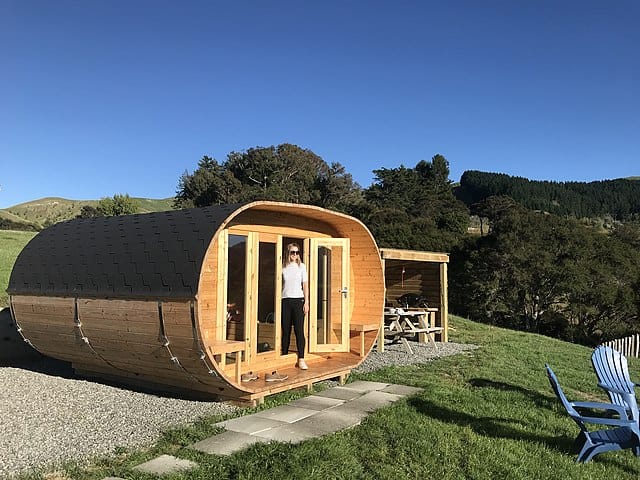
So you thought glamping had nothing to do with hospitality and tourism? Think again. It’s one of the hottest, most profitable, and fastest-growing segments in the short-term renting market. In this post, we’ll discuss why luxury camping isn’t going away soon and why you should be thinking of starting a glamping business of your own.
Glamping is a hot new trend in adventure, wellness, and eco-tourism. The word is a portmanteau – a blend – of the words ‘glamorous’ and ‘camping’. It was first floated around in the UK in 2005, became a common search word on Google in 2007, and was finally added to the Oxford English Dictionary in 2016.
Glamping is where travelers stay close to nature without losing their creature comforts. City folks can leave the hustle and bustle of the metro, explore the outdoors, yet enjoy comfortable — even luxurious — accommodations.
The range of amenities being offered at glamping resorts is spectacular. From fully functional kitchens to private showers, plush beds, solar-powered lights and heat, WiFi, AC, and even private decks.
There’s a whole slew of lodging structures. From pods to domes, bell tents to covered wagons, tipis, yurts, treehouses, and the now all-too-familiar tiny house.
The success of a glamping business can hinge on a variety of factors: its location, unique structure, nature-centered activities, and the luxe accommodations it offers. Those within driving distance from major cities tend to have the biggest potential for high occupancies.
Starting a glamping business is a great alternative to traditional vacation rental home renting. It’s a highly untapped niche that is now being noticed, with demand rising globally and savvy investors, big and small, scrambling to meet it.
The industry is still in its infancy, though — especially in the US where it began to take off only several years ago, compared to Europe where it rose in popularity as far back as 2007.
So there’s still a lot of room in the niche, and the space is actually big enough to accommodate a whole lot of players. Now’s a great time to jump in!
Consider the potential that a glamping business offers:
The global glamping market was valued at $2.35 billion in 2021. It is projected to grow to $3.4B in 2022, rising to more than double by 2032 to $10.6 billion.
In the United States, the glamping market size was valued at $463.7 million for 2021 and is expected to reach a revenue of around $1 billion by 2024. It is estimated to have a compound annual growth rate (CAGR) of 13.9% over the next decade.
Much of glamping’s growth is due to the popularity of adventure tourism. Friends and families love going out of town to do fun things together, especially on weekends. They’ll drive 3 to 4 hours to hike, mountain-bike, kayak, swim, or just huddle around a fire at night, eating smores — in the middle of a desert.
In North America, 60% of leisure visitors who reported glamping in 2019-2020 were Millennials and Gen Z — two key demographic groups you should watch if you’re looking into setting up a glamping business.
Globally, the outdoor hospitality sector has seen a huge growth compared to hotel stays in the last 2 years. Pitchup.com, a booking platform for outdoor stays in Europe, saw an 84% increase in room nights in Q3 of 2021 compared to 2019. Whereas OTAs offering mostly indoor stays like Airbnb, Expedia and Booking.com reported 7%, 32%, and 18% reductions in room nights, respectively.
If you haven’t been looking into the outdoor hospitality sector yet, it’s time you did!
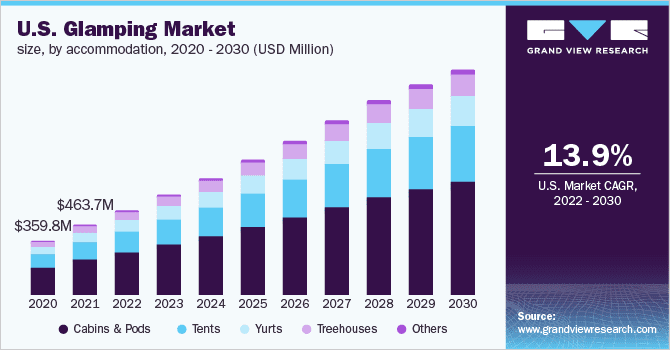
A glamping rental is cheaper to set up. Small, non-permanent shelters are not only less expensive to build or purchase, but they’re also easier to furnish, heat, light, clean, and maintain in general.
Since most glamping sites are located in rural areas, the land would also be much cheaper. Of course, the area needs to have amazing views. If you don’t own rural property with scenic surroundings, you can rent one. Many rural landowners are actually looking for ways to diversify their land use.
Since Covid-19 hit, lots of homesteaders have opened up their properties for glamping and recreational use to earn extra income. If you can find landowners and present a medium to a long-term business plan, you might be able to arrange a lease or partnership agreement.
Check your state’s agricultural extension office for listings, as well as farm-link websites that connect landowners with those looking to rent. These sites list available farms, forests, and recreational lands for sale or rent — per state, region, and all across the United States. Many listings already have barns, pastures, and sewage systems. Some sites even allow land seekers to post an ad listing their desired features: trees, fencing, electricity, etc.
Check out sites like Farmflip.com, Landsalelistings.com, Landstewardshipproject.com, Landwatch.com, and Thelandconnection.org.
That said, you can expect to get an earlier return on your investment than a regular brick-and-mortar vacation rental. According to GlampingHub, a successful glamping business might break even quickly and begin making money by the second year of operation. It also has considerable potential to scale quickly.
High-end structures like glamping domes can fetch you over $1,000 in a weekend. Treehouses can bring in $300-$400 per night. Medium to lower-end lodgings like tiny houses, yurts, pods, tents, tipis, and covered wagons charge anywhere from $80 to $250. Plan your glamping business based on your location, climate, theme, budget, and business plans.
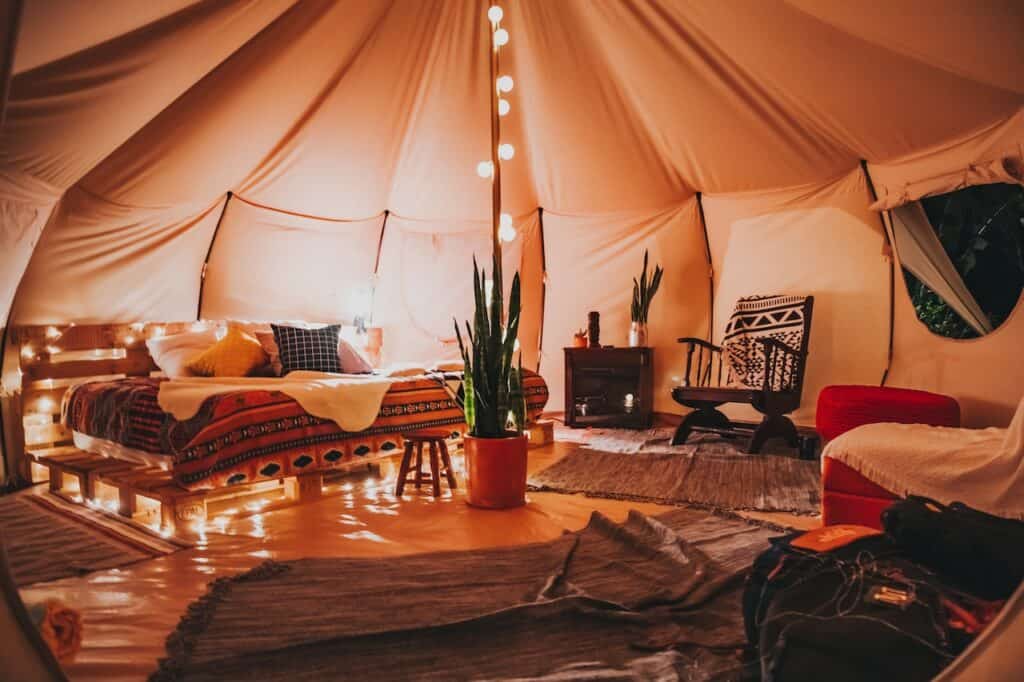
Glamping draws a wide range of markets. It’s not just limited to niche sectors like outdoor, fitness, and wellness groups.
Unlike urban rentals that cater mostly to business travelers, glamping caters to a whole range of demographics: couples, groups of friends, families with children and pets, and corporate executives with their staff on team outings.
Glamping is very kid-friendly, too. With the great outdoors literally within their reach, youngsters will have a whole lot of exploring to do. Tweens and teenagers can finally put their phones down, play all day, and still enjoy a warm bath and a comfy bed at night. Their parents don’t have to worry about pitching a tent, pumping an air bed, or having them sleep on the ground in sleeping bags.
That’s why glamping appeals to lots of folks — from different ages, comfort levels, and even income brackets. Glamp sites on the higher end of the spectrum are known to even offer jacuzzis and saunas, chef-cooked meals, and butler service.
If you’re hosting several properties already and want to diversify your market reach, glamping is the sector you should look into.
Eco tourism, also known as ‘green’ or ethical tourism, is one of the fastest-growing market sectors. A 2021 study by Virtuoso found that 82% of travelers want to travel more sustainably in the future.
That year, Booking.com launched its Travel Sustainable Badge program to lead the industry in showcasing a wider variety of sustainable stays. As of April 2022, more than 100,000 properties have been recognized for their sustainability efforts with a Badge.
Eco-friendly features are very compatible with glamping. As mentioned earlier, the structures used are non-permanent and easily collapsible. They leave minimal impact on the environment as opposed to a resort, hotel, or multi- or single-family lodging.
Accommodations can also be built using refurbished vintage structures like wagons, travel trailers/RVs, shipping containers, and unused barns. Solar and wind power can be harnessed, and dry or compost toilets set up. Nature-centered activities can be offered and locally-sourced food served.
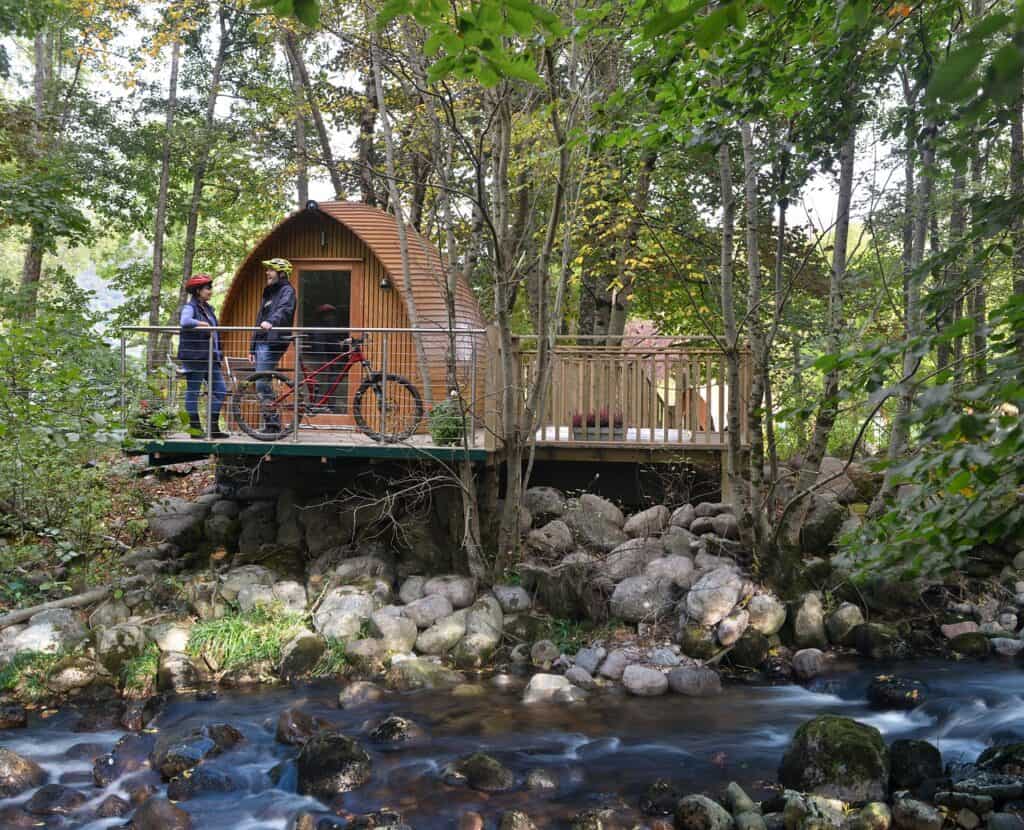
Without as many HOA, neighborhood, and city ordinances restricting your operations, you can run your glamping business with more freedom than you would in the city.
Do keep in mind that many rural communities have their own land use and zoning rules, too, so be sure to familiarize yourself with them.
More and more tourists are looking for unique, memorable experiences. Particularly millennials. Often glued to their phones, they’re always on the lookout for things to share, comment on, and ‘like’ on social media. Glamping affords them that privilege – to update others on what they did over the weekend, rave and brag about something cool and different.
Many in this Gen Z group are lifestyle travelers already. They’re so-called digital nomads, and their population only ballooned when corporate Americans were forced to work remotely due to Covid-19. But in spite of the lockdowns, many people found all the more reason, time, and inclination to go on vacations. Weekends extended to ‘work-ations’, business hours turned into ‘bleisure’ weeks.
After all, who doesn’t want to stay at a national park and still be immersed in luxe amenities?
Glamping is an experiential thing. It allows people to go places, do things, be active, be sensory, and be engulfed by the wilderness. All the while remaining warm and cozy.
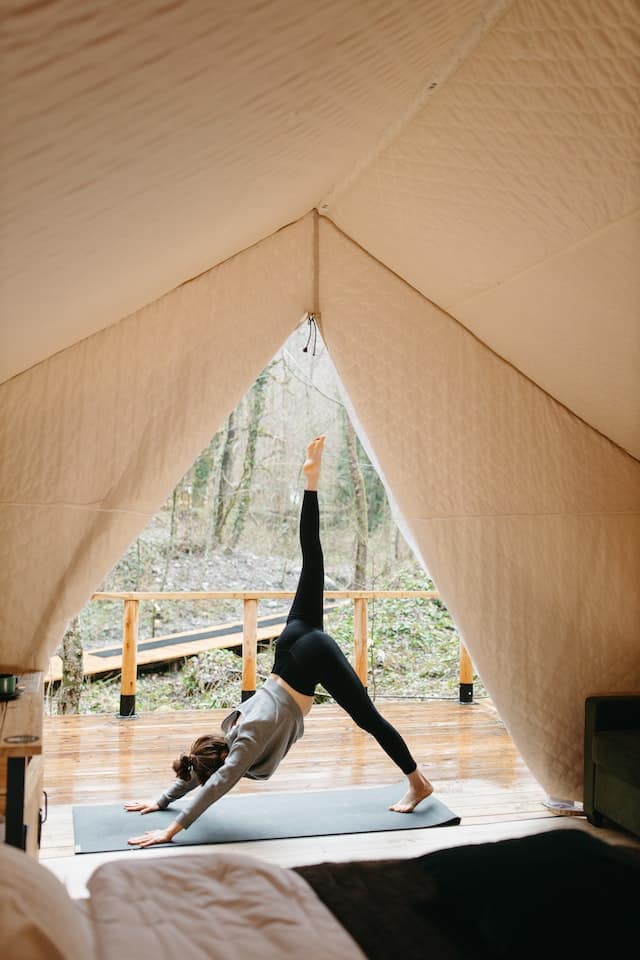
Wellness tourism, in itself, is already a global force to reckon with. In 2021, its market was valued at $652.8 billion. And it’s expected to rise to $816.5 billion this year. The Global Wellness Institute estimates the market will continue to keep growing annually by 20.9% through 2025.
Which is no surprise. Since Covid-19, people have been looking for places to de-stress and take care of their mental, emotional and physical health.
And with glamping, it’s only natural to integrate a wellness component. Many glamping resorts offer massage/spa services, dance and therapeutic exercises, arts and crafts, nature walks, bicycles, kayaks, and all sorts of rejuvenating activities.
Once you start your glamping business, you can list your space in the same online travel platforms as you would your other properties. Or use niche sites like GlampingHub, HipCamp, Yonder, and Pitchup (Europe).
Airbnb, of course, has already made its platform glamping-friendly, too. It now has a filter for guests to fine-tune their searches for unique stays. Users can search for yurts, domes, treehouses, barns, and farm stays — even with such options as farm animals, campsites, etc.
Read also: Alternatives to Airbnb: The Best 5 Rental Listing Sites to Get More Bookings and Revenue
Getaways within a half-day drive from the city, surrounded by nature and tranquility, are always a welcome respite for any urbanite.
Think of how you can provide that service. By properly planning, designing, and marketing a glamping experience, you can draw crowds of stressed-out city-dwellers.
And because comfort comes at a price, you can offer that service at a higher rate than a typical vacation rental.
Best of all, you can use the place yourself whenever you need to unwind.
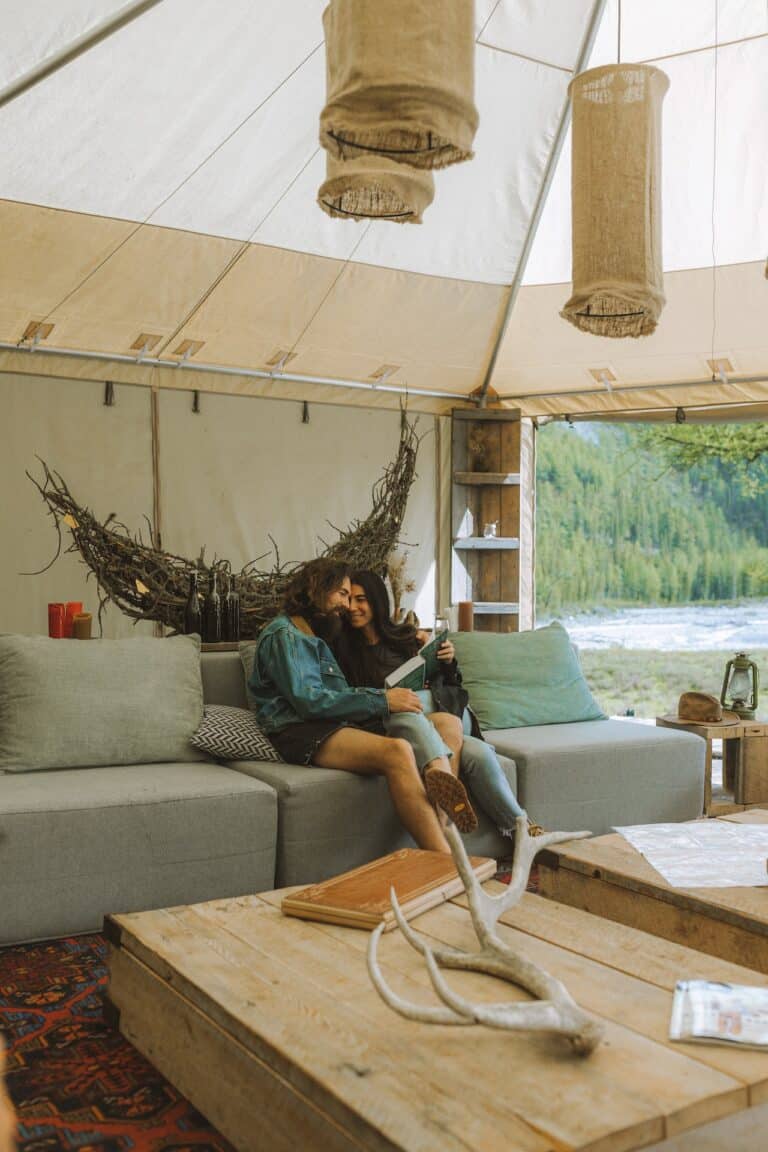
The rising popularity and demand for glamping don’t show any signs of slowing down. With robust growth projections for the next decade, it’s just smart to consider venturing into this very promising sector.
There are a lot of things you need to consider before jumping in, though. Extreme weather, seasonality, legal permits, energy, and water supply, and security are some of them.
Do your research before launching out.
Ready to learn how we built & operate a $2M/year short-term rental business, operate properties throughout the USA remotely, and acquired 70+ properties without owning any in just 2 years? Attend our free online masterclass to learn how you can do the same. Click here.